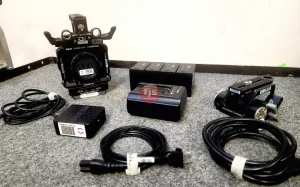Cinematic lenses are a crucial part of any film production. They can change the look and feel of your movie completely. In this article, we will explore the different types of cinematic lenses and why they are so important.
1: The Lens Format
The lens format is the size and shape of the lens. There are three main formats: anamorphic, super anamorphic, and theatrical.
Anamorphic lenses are the most common format. They use a circular shape and are typically used for movies that are filmed in widescreen. They have a wider angle of view than other formats, which allows for more cinematic shots. Super anamorphic lenses use a hexagonal shape and offer even more cinematic shots. The widest angle of view is achieved with this format, which is great for tracking action scenes. The downside to super anamorphics is that they can be more expensive to produce.
Theatrical lenses are designed for movie theaters. They have a square shape and are used primarily for 2D movies. They provide a narrower angle of view than other formats, which makes it easier to follow action scenes in 2D movies.
2: The Mount
The mount is the part of the lens that attaches to the camera. There are three main types of mounts: PL, C-Mount, and S-Mount.
PL mounts are used on cameras that are made by Panasonic. They offer a standard angle of view and are easy to use. C-Mounts are used on cameras made by Canon and Sony. They offer a wider angle of view than PL mounts and are better for shooting movies with wide shots. S-Mounts are used on cameras made by Samsung and Panasonic. They offer the widest angle of view available and are perfect for filming movies in 3D.
3: The Lens Glass
Lens glass is the material that makes up the lens. It is made up of several different elements, including a coating that reduces unwanted reflections.
4: The aperture
The aperture is the opening in the lens that allows light to enter. It is adjustable and determines how wide a range of light can enter the lens. Aperture settings are typically indicated by numbers, such as 1.8 or 2.4.
5: The focal length
The focal length is the distance from the lens to the object being photographed. It is adjusted to control the width of the image that is projected on screen. A shorter focal length will give you a wider image, while a longer focal length will give you a narrower image.
6: The film stock
Film stock is the material used to capture images on film. There are two main types of film stock: 35mm and 120mm.
35mm film stock is used for movies that are filmed in standard widescreen format. It has a smaller size than other formats and is less expensive to produce.
7: The focus distance
The focus distance is the distance from the lens to the object being photographed. It is adjustable and determines how close the camera can get to the object without losing focus.
8: The eyepiece
The eyepiece is located in front of the lens and allows you to view what is being photographed.
9: The iris size
The iris size is the size of the opening in the lens that controls how much light enters the lens. It can be adjusted to allow for different lighting conditions.
10: The focus ring
The focus ring is located on the side of the lens and is used to adjust the focus distance.
11: The field of view (FOV)
The field of view is the area that is visible in front of the lens. It is measured in degrees and can be adjusted by turning the focus ring.
12: The distortion factor
The distortion factor is a measure of how much the image is distorted when viewed onscreen. It is typically measured in terms of percent and is listed on the lens packaging.
13: Light transmission rate (TTR)
Light transmission rate is a measure of how much light is transmitted through the lens. It is listed on the lens packaging and indicates how wide a range of colors the lens can capture.
14: Price tag
Price tags indicate the price of the lens and can be found on the lens packaging. also, usually the price tag associated with a cinema lens its higher due to the complexity and workmanship associated with the equipment.
Conclusion
These are some of the most common features found in a cinematic lens. Each one plays a vital role in producing the perfect image for your movie.










